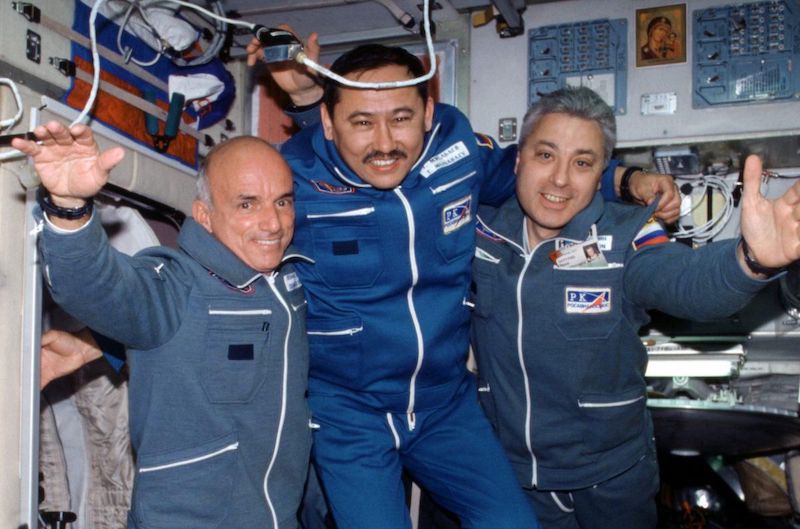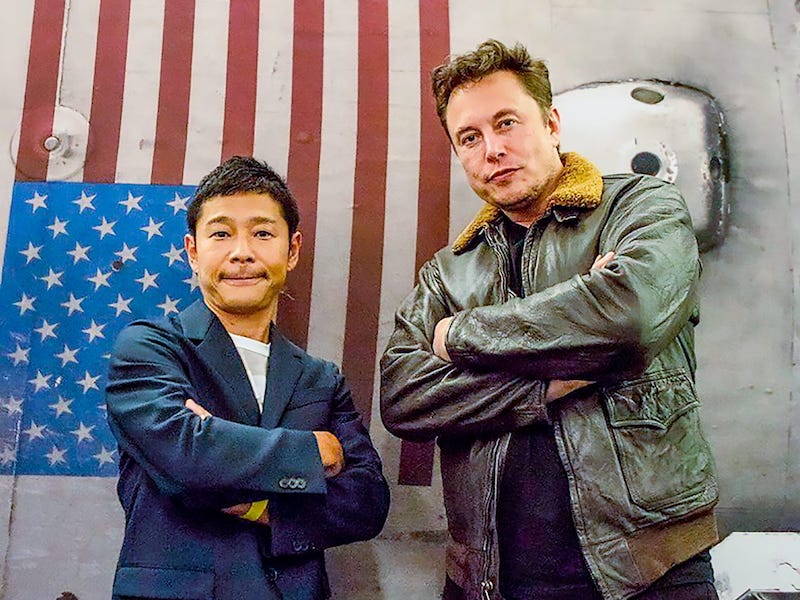Do you want to be an astronaut? That’s the question the Discovery Channel is asking people with a new reality show competition Who Wants to Be an Astronaut?, announced on Monday, May 18, 2021. The Discovery Channel says it aims to send one ordinary (but lucky) person on a space tourism trip to the International Space Station (ISS). The winner will be a crew member for Axiom Mission 2 (AX-2), the second mission from Axiom Space to transport a fully private group of space travelers to the ISS following AX-1, which is set to take place as early as January 2022. Who will get to go? The Discovery Channel said:
We’re not looking for rocket scientists. This is an opportunity for regular people to have the chance to travel to space and share that journey with the world. (Ok, ok, if you’re a rocket scientist you’re welcome to apply too!)
Discovery’s announcement is less than a week old, but NASA has yet to promote or comment on it so far. That vagueness parallels a different spaceflight reality show competition called Space Hero, which also announced that it had signed a Space Act Agreement with NASA. NASA has not said so far that it’s agreed to let any private citizens enter the space station as the series advertises.
Streaming of Discovery’s new reality series will be made available on its main channel, but will also be made available on Discovery’s affiliate websites and apps. Filming is expected to start in late 2021.
The casting call on Discovery’s website states that eligibility is limited to U.S. residents or citizens; additional requirements will be disclosed at a later date. According to Discovery, the series will be staged in eight “rigorous” parts, although the challenges expected of contestants – and who will be judging them – are unknown at this time. There’s been no mention of whether or not these challenges will include any of the physical training that professional astronauts must master before their journeys. The television network said in a statement:
The series will follow each of the contestants competing for the opportunity in a variety of extreme challenges designed to test them on the attributes real astronauts need most, and as they undergo the training necessary to qualify for space flight and life on board the space station. In the end, one lucky candidate, deemed to have the right stuff by a panel of expert judges, will punch their ticket for an adventure few have ever taken. The series will chronicle each pivotal moment along the way, from liftoff to reentry and the return home.
All in all, a boon to space tourism, which, by the way, is defined as human space travel for recreational purposes. Space tourism includes ordinary citizens traveling to Earth-orbit, or suborbit or, presumably, even lunar orbit (although that has not yet happened). In Earth history, only two countries – the U.S. and Russia – have allowed orbital space tourism. Toyohiro Akiyama, a Japanese TV journalist, and Helen Sharman, a British chemist, flew to a then-Soviet Union space station called Mir back in 1990 and 1991, respectively. Both won their tickets from contests promoted within their workplace and sponsored by affiliate companies. NASA has also flown a few private flyers, teachers, and politicians as “spaceflight participants” on the space shuttle in the 1980s. Among those passengers included teacher Christa McAuliffe, who died in the 1986 Challenger space shuttle disaster, and newly named NASA administrator Bill Nelson.
A handful of wealthy tourists have also made it off-planet. Dennis Tito, an American engineer and entrepreneur, is most widely known as the first space tourist to fund his own trip into space. In mid-2001, he spent nearly eight days in orbit as a crew member of ISS EP-1, a visiting mission to the International Space Station. AX-1, operated by SpaceX on behalf of Axiom, originally named American film professionals Tom Cruise and Doug Liman as passengers for a movie project, but it was later said they’ll fly on a subsequent flight.

It’s worth noting that several previous astronaut competitions ended in failure and/or were cancelled. In 2017, for example, Suzanne Imber won the BBC Two television program Astronauts, Do You Have What It Takes? in which judge and former astronaut Chris Hadfield recommended her for the European Space Agency (ESA) after a competitive process. Imber has not yet gone on to fly. In February 2013, Tito announced his intention to send a privately financed spaceflight to Mars by 2018, stating that the technology is already in place. However, in November 2013, Tito and other Mars One team members admitted that their plan was impossible without significant levels of assistance and funding from NASA.
It’s not clear if Who Wants to Be an Astronaut? will accept applications from civilians with disabilities, but its casting call includes relevant questions, suggesting that it may. ESA’s current astronaut process does not discourage applicants with disabilities. And Inspiration4 – which SpaceX dubs “the world’s first all-civilian mission” – includes Hayley Arceneaux, who wears a partially prosthetic limb after childhood bone cancer. In that mission, Hayley and three other passengers will launch on a Crew Dragon capsule into orbit around Earth. It’s currently scheduled to launch “no earlier than September 15, 2021,” according to the official mission website. Founder and CEO of Shift4 Payments Jared Isaacman will command the mission in its goals to also raise support for St. Jude Children’s Research Hospital. He said in a statement that he’s donating the three accompanying seats on the mission:
… To crew members who will be selected to represent the mission pillars of leadership, hope, generosity and prosperity. Inspiration4 is the realization of a lifelong dream and a step towards a future in which anyone can venture out and explore the stars. I appreciate the tremendous responsibility that comes with commanding this mission and I want to use this historic moment to inspire humanity while helping to tackle childhood cancer here on Earth.
Then there’s Japanese billionaire Yusaku Maezawa, who was revealed as Starship’s first passenger in a free-return trajectory around the moon. That announcement was made back in 2018 during an event with CEO Elon Musk at SpaceX’s California headquarters. At the event, Maezawa, an avid art collector, announced his Dear Moon Project, which aimed to bring “six to eight artists from around the world” to join him in the roughly six-day mission sometime in 2023. He said:
These artists will be asked to create something after they return to Earth, and these masterpieces will inspire the dreamer within all of us. I want people from all kinds of backgrounds to join. It will be 10 to 12 people in all, but I will be inviting 8 people to come along on the ride.

Suborbital vehicles designed for space tourism are also in development in an emerging industry currently led by Blue Origin and Virgin Galactic. The Scaled Composites Model 339 (SpaceShipTwo) is one example, manufactured by the Spaceship Company, a California-based company owned by Virgin Galactic.
Bottom line: Will reality TV drive space tourism? The Discovery Channel announced on May 18, 2021, that it’s launching a new reality show competition called Who Wants to Be an Astronaut? It aims to send one ordinary (but lucky) person to the International Space Station for an eight-day stay.
Read more from EarthSky: What astronauts think about life away from Earth











